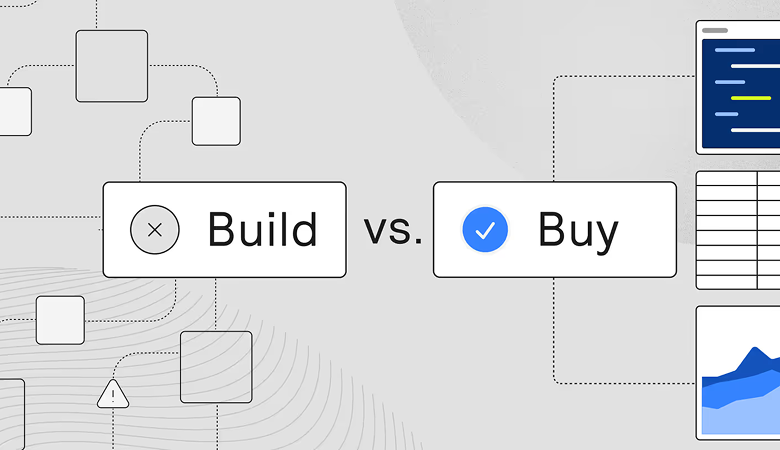Stytch is an authentication platform with pay‑as‑you‑go pricing that offers a “self-serve” slider that lets you estimate your final bill based on the number of your monthly active users.
This post explains how Stytch approached pricing, why usage-based models are critical for platforms like it, and how Orb powers the infrastructure underneath.
Note: Prices are subject to change at any time. For the most up‑to‑date pricing, visit Stytch's official pricing page.
Stytch pricing model explained
Stytch uses a pay‑as‑you‑go model with a limited amount of free usage and no feature gating. The pricing depends on a series of components:
Note: In November 2024, Stytch simplified pricing, expanded free limits, and removed feature gating. Anyone who’s interested can play around on their pricing site to see how much they would actually pay depending on their specific needs.
Why do companies like Stytch adopt usage‑based billing?
Here’s why companies like Stytch implement usage-based billing:
- Costs fluctuate with usage: Infrastructure and verification events vary by user behavior, so pricing that tracks events avoids over-charging and under‑charging.
- Value isn’t tied to seats: One app may trigger thousands of auth flows; another hardly any. Usage reflects value better than seat count.
- Usage spikes are unpredictable: Launches, promotions, and bot traffic can spike flows; usage-based billing absorbs volatility without hard caps.
Why usage-based billing is becoming the default
The market is moving toward usage, with hybrid models growing
Orb’s 2025 State of AI Agent Pricing report shows most companies blend subscriptions with a usage-based component. Only a minority go “all-usage,” while 92.4% of companies run hybrid models. This trend is more than likely to continue.
AI and variable-cost workloads changed the math
Unlimited plans break under heavy inference. Recent reporting shows “inference whales” can rack up five-figure compute costs on fixed subscriptions, forcing vendors to add usage meters, rate limits, or both.
Also, ecosystem pricing is usage-first. Leading AI APIs (OpenAI, Anthropic) price by tokens and calls, so downstream platforms naturally meter to stay margin-safe.
FinOps maturity makes usage manageable (and auditable)
The FinOps community is extending cost governance beyond cloud IaaS into SaaS and licensing. Practices like allocating shared costs make usage-based spending easier to forecast and explain in reports.
Also, engineering + finance can meet in the middle. McKinsey highlights “FinOps as code,” embedding guardrails and budgets into pipelines so teams optimize costs continuously. All these reports clearly explain the trend toward more usage-aligned pricing.
Why subscription-only falls short for many scenarios
Here’s a quick look at the reasons:
- Feature gating blocks evaluation. Modern buyers want to test full functionality and only pay more as usage rises. This is exactly why Stytch removed feature gates and hard caps in its 2024 overhaul.
- Procurement needs predictable levers. Credits, thresholds, and rate limits let finance cap exposure while still aligning price to value; something flat tiers can’t do when workloads surge.
- Unit economics drift under heavy compute. When backend costs scale with events or tokens, seat-only pricing blurs margins; usage meters restore cost-to-value visibility.
How Stytch built a modern billing system with Orb
Stytch wanted to launch a new usage-based pricing model for its authentication platform, but the team’s existing billing system couldn’t support the new model.
Manual processes took an entire business day each month to generate invoices, and making any pricing changes required engineering time. Building a new billing system from scratch would have delayed their go-to-market timeline.
How Orb helped
In just two weeks, Stytch implemented Orb’s billing platform without diverting engineering resources from core product work.
Orb’s system automated invoicing, ingested granular usage data in real time, and allowed Stytch to update pricing without redeploying code. This flexibility meant Stytch could adjust its pricing model right up until launch day.
The outcome
Stytch reduced monthly billing time by about 75%, freeing the team to focus on product development and customer experience.
- The company gained the ability to roll out flexible, usage-aligned plans for different customer segments, all while maintaining accuracy and transparency in billing. Customers now receive clear, itemized invoices tied directly to their usage, improving trust and reducing billing disputes.
Main takeaway
Stytch’s model reflects a wider shift toward usage‑aligned monetization in infrastructure and developer platforms. Pricing software is more efficient when it follows activity, not guesswork.
Teams need billing systems that capture granular events, support plan changes without code, and present clear invoices. That’s the role Orb plays for companies operating usage‑based models.
Note: For more on usage-based billing for AI agents, see Orb’s pricing for AI agents and How to price agents in Orb.
Learn how Orb supports usage‑based billing
Here's how Orb can bolster your pricing strategy:
- Precision billing: Orb tracks every raw event. This ensures accurate and transparent invoices for your customers, even as you change your pricing.
- Scalable pricing: Orb's plan versioning empowers you to create and manage diverse pricing tiers. Adapt your pricing as your business grows and keep track of all pricing plans without messy spreadsheets.
- Data-driven insights: Orb transforms complex usage data into actionable insights. This advantage is crucial for products with granular usage metrics.
- Simplified workflow: Integrations with data warehouses and accounting software streamline operations. Direct integrations are vital for making sure that your usage and revenue data is synced across all systems.
- Customizable billing: Define your own usage metrics and pricing models using our visual editor or SQL editor.
The proof is in the results, and product managers at Perplexity and Vercel trust Orb to build and manage their complex pricing structures because they know this.
Explore Orb's flexible plans and find one that fits your business needs.



